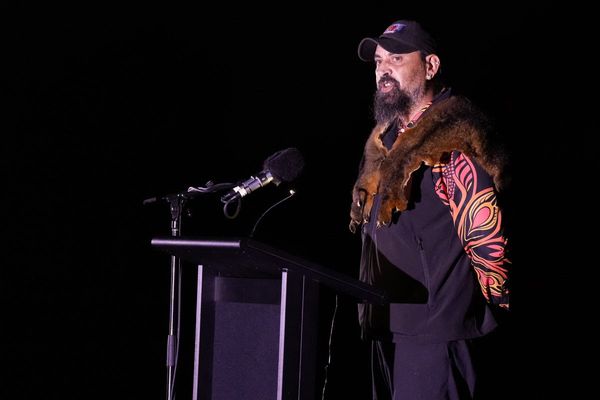On February 21, the Indian Space Research Organisation (ISRO) reported it had successfully completed human-rating the CE-20 rocket engine ahead of its use in an important test flight later this year of the country’s mission to launch an Indian astronaut to space onboard an Indian rocket. The CE-20 is an indigenous cryogenic engine ISRO developed to use with the GSLV Mk III, now called the LVM-3, launch vehicle. It represents an improvement on the CE-7.5 cryogenic engine and is instrumental to ISRO successfully realising its human spaceflight, a.k.a. Gaganyaan, mission.
Engineers prefer to use liquid fuels for rocket motors because they are less bulky and flow better than solid fuels. Using hydrogen as fuel is also desirable because when it is combusted, it generates the highest exhaust velocity. For example, combusting hydrogen with oxygen as the oxidiser results in an exhaust velocity of 4.5 km/s whereas that produced by unsymmetrical dimethylhydrazine and nitrogen tetroxide — the combination used by the second stage of the PSLV rocket, e.g. — is around 3.4 km/s. This is why hydrogen is a desirable fuel for rocket motors.
A tale of three engines
However, hydrogen in liquid form is not well-behaved: it needs to be maintained at -253 degrees C (and the liquid oxygen at -184 degrees C) and leaks very easily. Engineers need special equipment to store and transport liquid hydrogen and special engines that can use it to power a rocket. These are cryogenic engines.
ISRO has used three cryogenic engines over the years: KVD-1, CE-7.5, and CE-20. The last two are India-made, although the design of the CE-7.5 is based on the KVD-1, which Russia (as the Soviet Union) supplied to India in the early 1980s. The GSLV Mk II launch vehicle uses CE-7.5 engines to power the third stage of its ascent.
The operation of a cryogenic engine requires a cryopump, a device to trap and cool the hydrogen and oxygen to liquid form; special storage tanks; and turbopumps to move the cooled fuel and oxidiser to the engine. The CE-7.5 engine uses the staged-combustion cycle. Here, a small amount of the fuel is combusted in a pre-burner. The resulting heat is used to drive the turbine that powers the turbopump. Once the turbopump has brought the rest of the fuel and oxidiser to the combustion chamber, the hydrogen is combusted to power the main engine plus two vernier thrusters — smaller engines that tweak the rocket’s speed and orientation once it’s in flight. The exhaust from the pre-burner is also routed to the combustion chamber.
The CE-20 engine uses the gas-generator cycle, which discards the exhaust from the pre-burner instead of sending it to the combustion chamber. This reduces fuel efficiency but, importantly for ISRO, makes the CE-20 engine easier to build and test. ISRO has also dropped its vernier thrusters in favour of allowing the engine’s nozzle to make small rotations — or gimbal — to adjust the rocket’s flight path. As a result, while the CE-7.5 engine is lighter and sports higher fuel-use efficiency, the CE-20 engine achieves a higher maximum thrust (~200 kilonewton v. 73.5 kilonewton) with a shorter burn duration.
Maximising minimum reliability
These features support the capabilities of the LVM-3 launch vehicle: from being able to lift up to eight tonnes to the low-earth orbit to being the vehicle of choice for the first Gaganyaan mission, while improving India’s self-sufficiency vis-à-vis launch capabilities and keeping launch costs low.
This said, humans aren’t the same as satellites, and rockets (and engines) that carry humans to space need to be tested more intensively — an exercise called ‘human-rating’. Broadly speaking, human-rating entails processes to verify particular errors, like the failure of a particular component, happen at less than a particular rate. Say a particular valve won’t work as intended once every 1,000 tries. So the valve will need to be tested at least 1,000 times to confirm the failure rate is once per 1,000 and, if required, to make it more reliable.
Since 2011, NASA’s Commercial Crew Programme has required the probability of mission loss when the launch vehicle is ascending or descending to be lower than 1/500 (or 0.2%). Obviously the agency can’t conduct so many test flights before a launch, but it can determine the contributions of different mission components to the overall failure rate and test those components to ensure their minimum reliability is above the corresponding limit. The engine test is one example of such a qualifying exercise.
ISRO said in its February 21 press release that the four CE-20 engines had been hot-fire tested for a cumulative “8,810 seconds against the minimum human rating qualification standard requirement of 6,350 seconds”. (In a cold-flow test, fluids flow through the engine but there’s no combustion or exhaust, whereas there is in a hot-fire test.) Hot-fire tests of this duration will ensure the engine’s performance is within acceptable limits in conditions mimicking those that will transpire during the actual mission.
Formidable legacy
The CE-20 engine is accruing a formidable legacy. Aside from being highly performant, it is also a testament of ISRO’s accomplishments after the U.S.’s sanctions against India in the 1980s. Former ISRO chairman U.R. Rao wrote in his book ‘India’s Rise as a Space Power’ that when NASA was developing a cryogenic engine for its Saturn rockets, it identified 58 types of failure, and that Japan had to conduct more than 500 tests to first qualify its LE-7 engine.
LVM-3 rockets using the CE-20 in the third stage — where the first stage comprises two solid-fuel boosters and the second stage, two liquid-fuelled Vikas 2 engines — have already launched the Chandrayaan-2 and -3 missions and the 5.8-tonne payload of the commercial OneWeb mission in 2022. Next stop: the first uncrewed Gaganyaan test flight, designated G1, which ISRO has tentatively scheduled for mid-2024.







